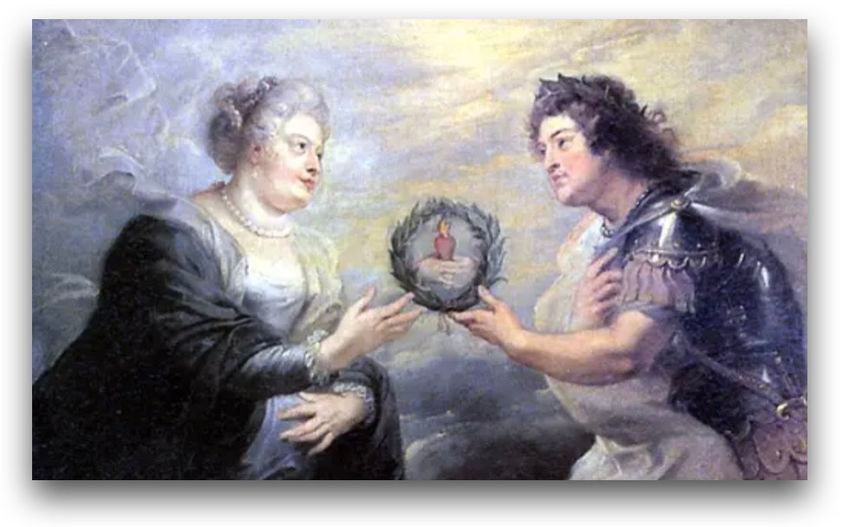Golden Opportunities
- smcculley
- Aug 9, 2024
- 3 min read
Golden Opportunities
From our friend, Charles R.
All processes are subject to the law of octaves. This objective principle can be applied to all scales of the cosmos, from microbe to man, planets, stars, galaxies and beyond. There are two types of octaves; a descending octave and an ascending octave. Because self-remembering, an ascending octave, has no momentum, producing consciousness requires a constant, moment-to-moment effort. This is because higher centers are not yet crystallized, not yet a permanent characteristic of our being. Descending octaves occur mechanically, no effort is required. Imagination, identifying and expressing negative emotions all happen habitually and without effort. If we draw an analogy to an ascending octave as an Herculean task (which may be the esoteric meaning of this Greek myth), then the analogy of a descending octave would be a downhill slide on a well-greased icy slope.
There are two intervals in an octave. In an ascending octave the intervals occur at mi-fa and si-do. In a descending octave the intervals occur at si-do and mi-fa. In one sense, the intervals mirror each other. If si-do means a greater effort is necessary to continue the octave of self-remembering, then the si-do interval in a descending octave is characterized by a complete and utter abandonment of any conscious principle leaving the individual open to any and all negative influences from external sources. Due to his or her own abdication of presence, the lower self completely extinguishes the third state. There’s also the mi-fa interval. At this point in a descending octave, because intervals are where octaves deviate, negative thoughts and feeling begins to wane. This is our saving grace as it were. Because octaves naturally deviate at the intervals, negative emotions don’t last forever. The mystic fathers whose writings are compiled in the Philokalia understood this: “When inner peace is lost, such a state is not permanent.” Eventually negativity dissipates and the possibility of engaging in an an ascending octave may be possible. Even so, during descending octaves they burn conscious hydrogens, the energy needed for self-remembering. It may take hours, days or longer before conscious energy is produced in sufficient quantity for self-remembering.
This is where three lines of work, that are available only in a school, interrupt the momentum of descending octaves and support the necessary energy for students to bridge the mi-fa and si-do intervals in the ascending octave of introducing and prolonging presence.
For the past couple weeks my own efforts at producing a post for our Facebook readers went into an interval. The interval was characterized by a lack of inspiration, questioning whether or not my efforts really count, in other words a string of doubts. What helped me bridge the interval was helping another student on the third line of work. Accepting a third line role helped me bridge intervals on both my first and third lines of work. The nature of the interval was mi-fa, characterized by ‘passive’ resistance. When self-remembering seems like a distant star or feelings of doubt about one’s efforts or the quality of one’s work appears, this is how the lower self tries to sabotage the third state. A si-do interval may described as ‘snatching defeat from the jaws of victory.’ The lower self creates storms of imaginary denying force. William Shakespeare’s description of ‘A tale told by an idiot, full of sound and fury, signifying nothing.’ is an accurate portrayal of a si-do interval. The mi-fa interval is bridged by self-remembering, and the si-do interval is bridged by transforming suffering.
There is yet another perspective we can consider when experiencing an interval. It is the effort itself that is needed to bridge it. During intervals we are able to observe the machine as well as the opportunity to make extra efforts. From a student recently: “Intervals are golden opportunities to make conscious efforts, because only conscious efforts produce the golden state of self-remembering.”
The painting by Peter Paul Reubens portrays the state that the continued effort or the continued bridging of intervals produces. The triumph of Truth may be construed as the permanent triumph of presence over imagination, identification and negative emotions. Higher centers gaze lovingly and objectively upon themselves, cradling the inextinguishable flame of conscious immortality. This is the promise of School. Higher emotional and higher intellectual centers joined in the mystical marriage of crystallization.
Image: Detail from The Triumph of Truth, 1622-1625 Peter Paul Reubens, Louvre, Paris France









Comments